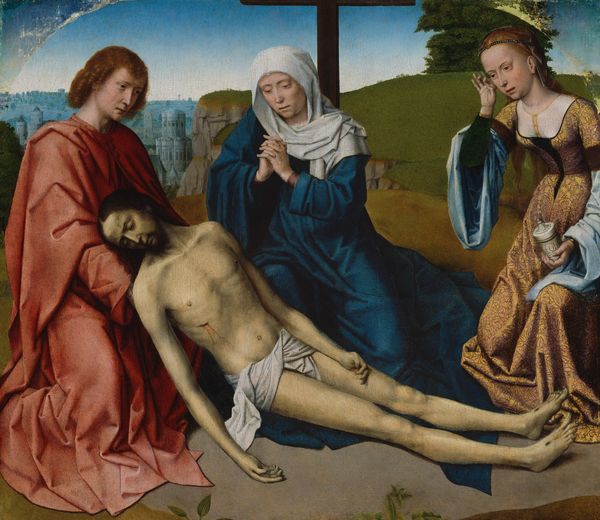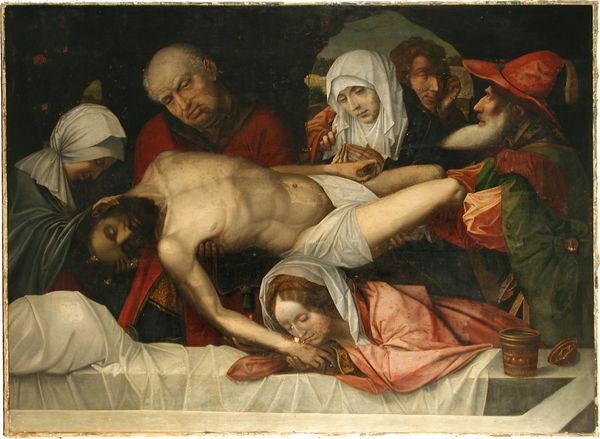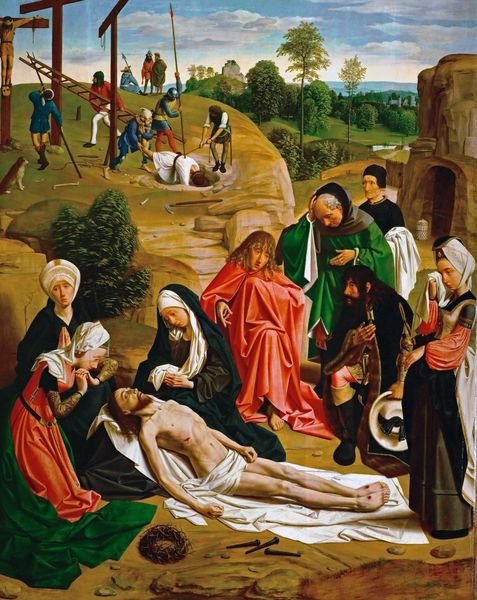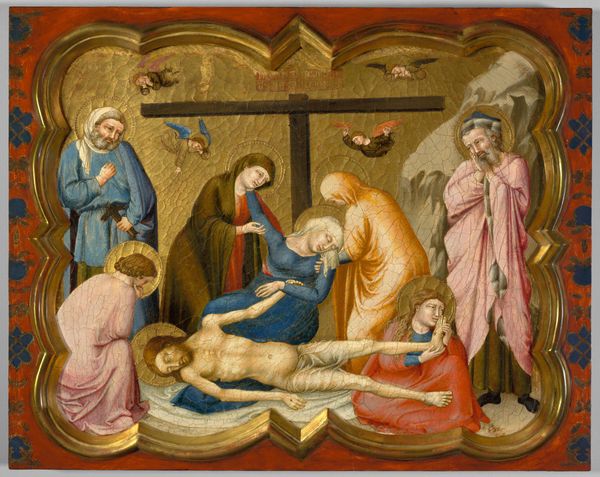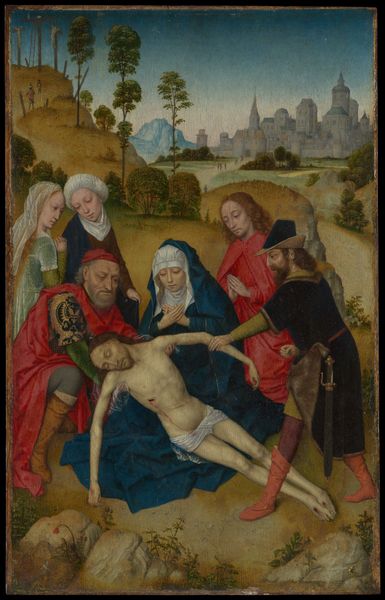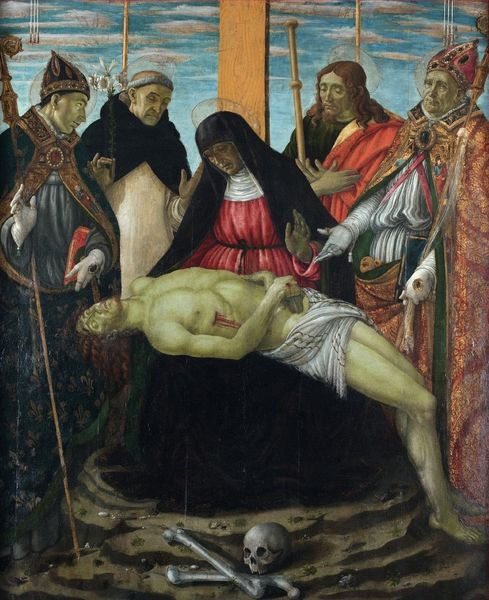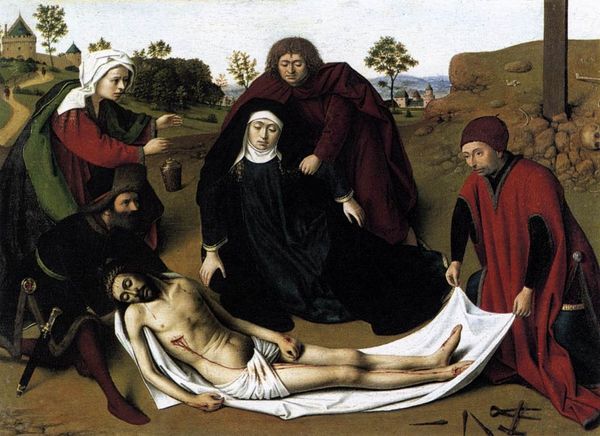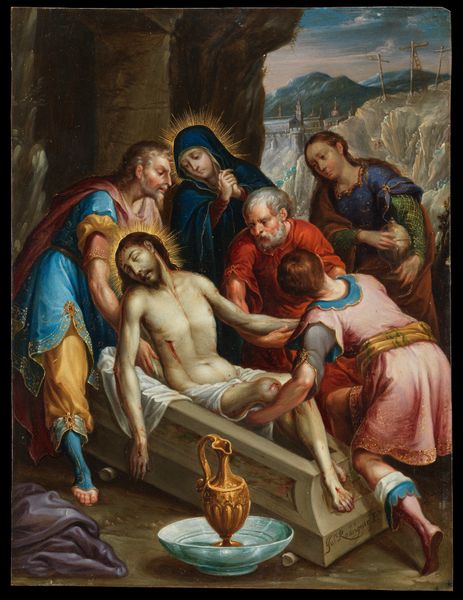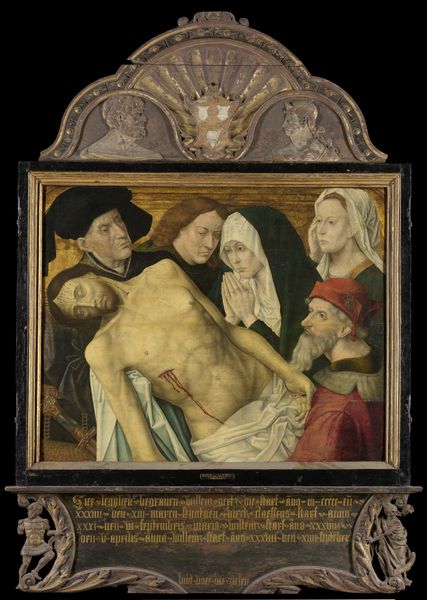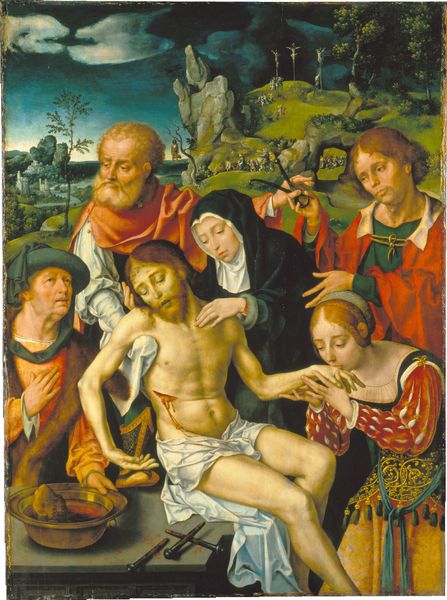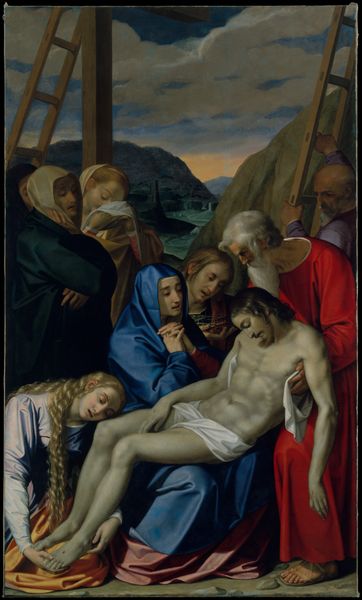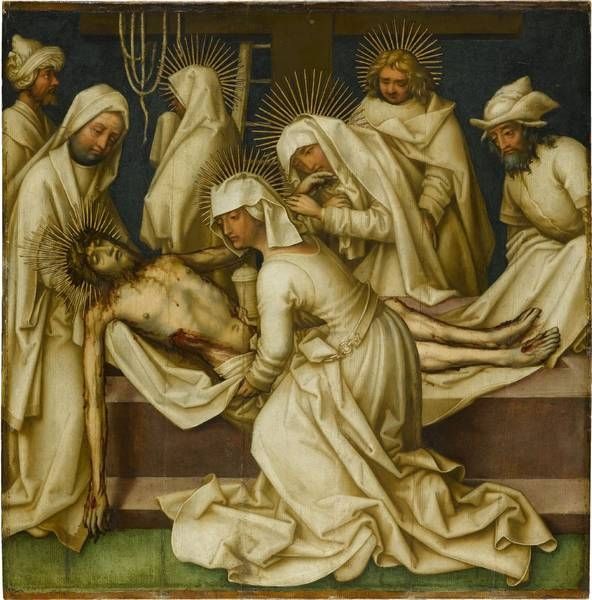
painting, oil-paint
#
portrait
#
high-renaissance
#
narrative-art
#
painting
#
oil-paint
#
figuration
#
oil painting
#
group-portraits
#
history-painting
#
italian-renaissance
Dimensions: 19 × 27 9/16 in. (48.3 × 70 cm)
Copyright: Public Domain
Editor: This oil painting, entitled "Entombment," dates from around 1500 to 1505, and is currently held at The Art Institute of Chicago. What strikes me most is the composition – the lifeless body of Christ dominates the foreground, while the mourners behind him seem almost compartmentalized in their grief. What do you see in this piece from a historical perspective? Curator: The "Entombment" provides a powerful lens through which to examine the evolving public role of art in the early 16th century. This particular depiction participates in a larger trend of increased emotionality within religious imagery. The artist is consciously attempting to elicit an affective response from the viewer, drawing them into the scene of mourning and encouraging a more personal connection with Christ's suffering. How do you think the placement of this painting in a church, or even a private home, at the time, would have shaped its meaning? Editor: I imagine the patrons, likely wealthy families or religious orders, would use this painting to perform their piety and also promote their own status as virtuous members of the community. Curator: Precisely. The act of commissioning such a work was itself a display of wealth and devotion, solidifying the patron’s position within the socio-religious hierarchy. These paintings, although seemingly straightforward in their religious symbolism, also operated as political objects, reinforcing the existing power structures of the time. Look closely at the figures – who is given prominence? Editor: Mary, clearly. The focus given to her emphasizes her maternal sorrow, and how it likely increased emotional engagement among female viewers. Curator: Exactly. By highlighting Mary’s grief, the painting appealed to a broader audience. It invited contemplation and emphasized the humanity of these religious figures. Looking at the cultural function of a painting like this deepens our understanding of the role of art. Editor: This perspective on art, blending the sacred and the societal, is fascinating to consider. Thanks!
Comments
No comments
Be the first to comment and join the conversation on the ultimate creative platform.
